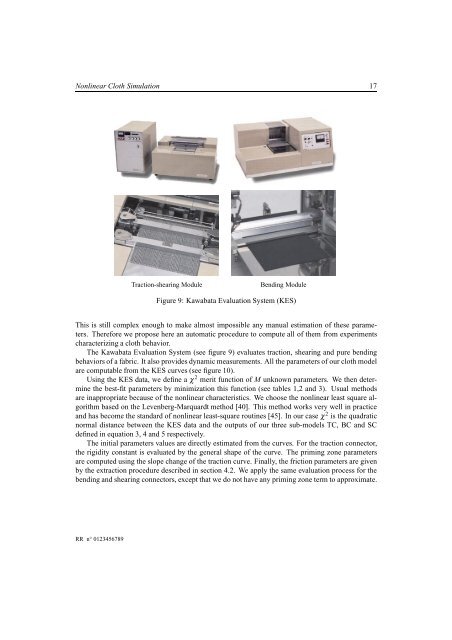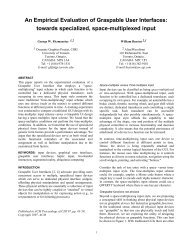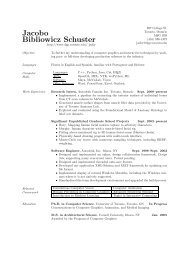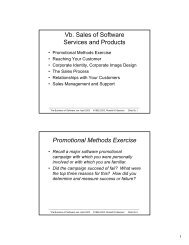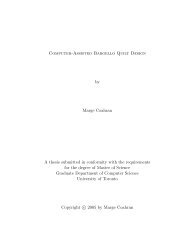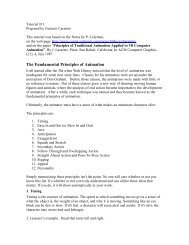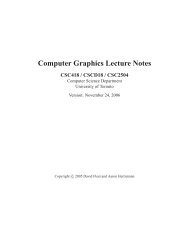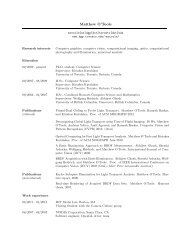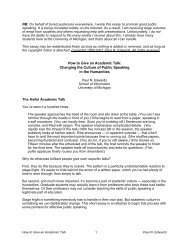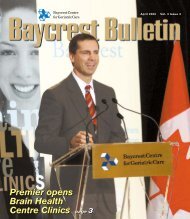Nonlinear Cloth Simulation - dgp
Nonlinear Cloth Simulation - dgp
Nonlinear Cloth Simulation - dgp
You also want an ePaper? Increase the reach of your titles
YUMPU automatically turns print PDFs into web optimized ePapers that Google loves.
<strong>Nonlinear</strong> <strong>Cloth</strong> <strong>Simulation</strong> 17<br />
Traction-shearing Module Bending Module<br />
Figure 9: Kawabata Evaluation System (KES)<br />
This is still complex enough to make almost impossible any manual estimation of these parameters.<br />
Therefore we propose here an automatic procedure to compute all of them from experiments<br />
characterizing a cloth behavior.<br />
The Kawabata Evaluation System (see figure 9) evaluates traction, shearing and pure bending<br />
behaviors of a fabric. It also provides dynamic measurements. All the parameters of our cloth model<br />
are computable from the KES curves (see figure 10).<br />
Using the KES data, we define a χ 2 merit function of M unknown parameters. We then determine<br />
the best-fit parameters by minimization this function (see tables 1,2 and 3). Usual methods<br />
are inappropriate because of the nonlinear characteristics. We choose the nonlinear least square algorithm<br />
based on the Levenberg-Marquardt method [40]. This method works very well in practice<br />
and has become the standard of nonlinear least-square routines [45]. In our case χ 2 is the quadratic<br />
normal distance between the KES data and the outputs of our three sub-models TC, BC and SC<br />
defined in equation 3, 4 and 5 respectively.<br />
The initial parameters values are directly estimated from the curves. For the traction connector,<br />
the rigidity constant is evaluated by the general shape of the curve. The priming zone parameters<br />
are computed using the slope change of the traction curve. Finally, the friction parameters are given<br />
by the extraction procedure described in section 4.2. We apply the same evaluation process for the<br />
bending and shearing connectors, except that we do not have any priming zone term to approximate.<br />
RR n° 0123456789


